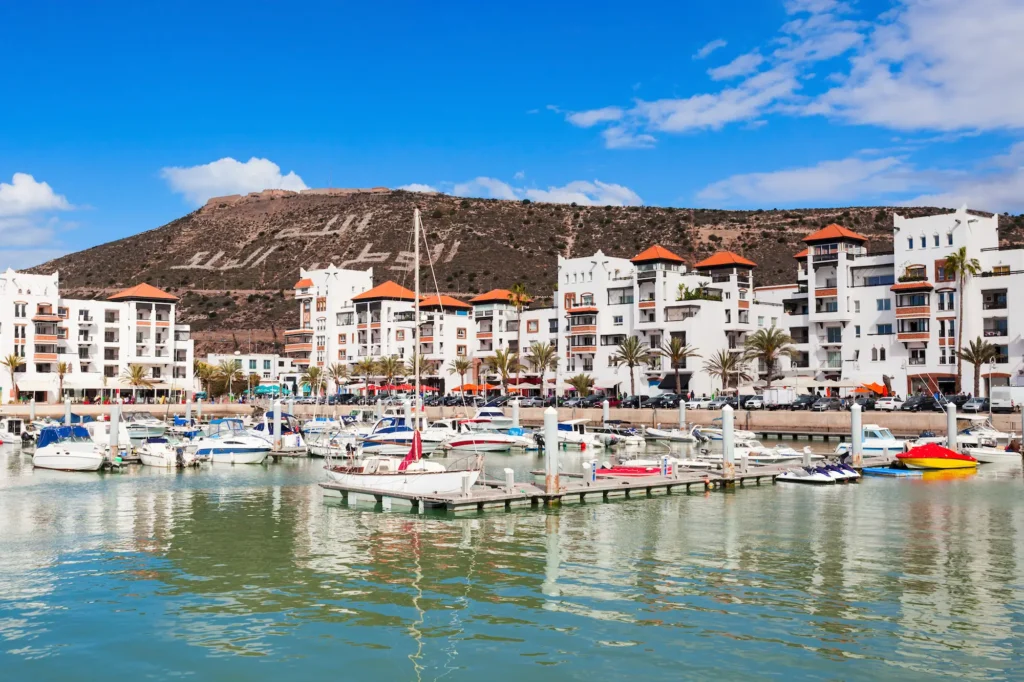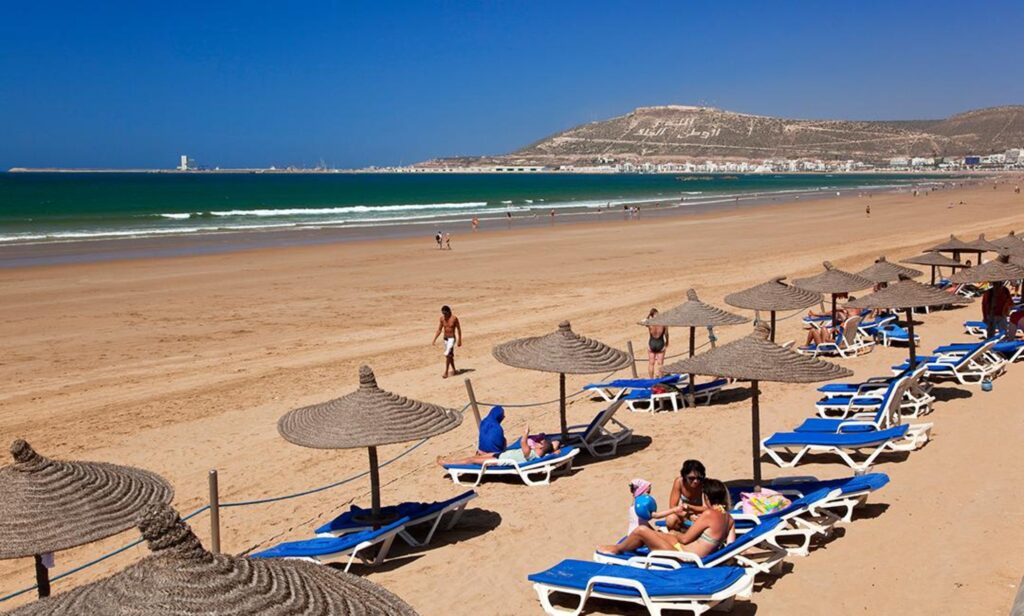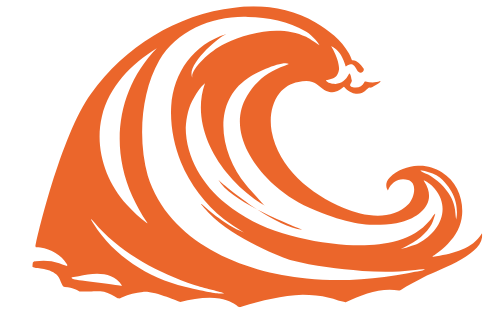Morocco’s diverse climate zones make it a fascinating destination for travelers and surfers alike. From the sun-kissed Mediterranean coast to the arid Sahara Desert, the country’s varied landscapes create a range of weather conditions.

You can experience a mild climate in the north, while the south is characterized by hot desert temperatures. Understanding Morocco’s weather patterns is essential for planning your trip, especially if you’re heading to the surf camps in Tamraght.
Key Takeaways
- Morocco’s climate varies greatly across different regions.
- The north has a mild climate, while the south is hot and desert-like.
- Understanding the weather is crucial for planning a trip to Morocco.
- The country’s diverse landscapes create a range of weather conditions.
Understanding Morocco’s Climate Zones
Morocco’s diverse geography gives rise to a variety of climate zones, each with its unique characteristics. This diversity makes Morocco a fascinating destination for travelers and surfers alike.
The country’s climate zones can be broadly categorized into three main types: coastal, mountain, and desert climates. Each of these plays a significant role in shaping the weather and surfing conditions in Morocco.
Coastal Climate: Perfect for Surfing
The coastal climate in Morocco is influenced by the Atlantic Ocean, providing a mild and temperate climate year-round. This makes the coastal regions, such as Taghazout, ideal for surfing. The consistent swells and favorable winds create perfect conditions for surfers of all levels.
Mountain Climate: The Atlas Range Effect
The Atlas Mountains have a profound effect on Morocco’s climate, creating a rain shadow effect that influences the weather in the surrounding regions. The mountain climate is characterized by cold winters and mild summers, with significant snowfall during the winter months.
Desert Climate: The Saharan Influence
The Sahara Desert covers a significant portion of Morocco, bringing with it a harsh desert climate characterized by extreme temperatures and low humidity. The desert climate is known for its intense heat during the day and cooler temperatures at night.
“Morocco’s diverse climate zones offer a unique experience for surfers and travelers.” Understanding these climates is key to appreciating the country’s varied landscapes and weather conditions.
The Weather in Morocco Throughout the Year
The weather in Morocco is as diverse as its landscapes, changing with the seasons. Morocco’s climate varies from the coastal regions to the mountains and desert, making it a fascinating destination year-round.
Spring (March-May): Mild Temperatures and Blooming Landscapes
Spring is a beautiful time in Morocco, with mild temperatures and blooming landscapes. It’s an ideal period for outdoor activities, including surfing, as the weather is generally calm and pleasant.
Summer (June-August): Hot Days and Warm Waters
Summer brings hot days, especially in the desert regions, but the coastal areas remain pleasant, with warm waters perfect for surfing. It’s peak tourist season, so expect more crowds at popular surf spots.
Fall (September-November): Ideal Surfing Conditions
Fall is considered one of the best times for surfing in Morocco. The summer crowds have dissipated, and the weather remains warm, with consistent surf conditions along the Atlantic coast.
Winter (December-February): Mild Coastal Weather
Winters in Morocco are mild, especially along the coast, making it a great time to enjoy surfing and other outdoor activities without the crowds. The temperatures are cooler, but still pleasant, especially in the southern regions.
Understanding the seasonal weather patterns in Morocco can help you plan your surf trip to make the most of your time on the water.
Regional Weather Variations Across Morocco
From the Mediterranean coast to the Sahara Desert, Morocco’s weather varies significantly across different regions. Understanding these variations is key to planning your trip, whether you’re looking to surf the Atlantic coast or explore the desert landscapes.
Northern Coast: Mediterranean Influences
The northern coast of Morocco is influenced by the Mediterranean climate, characterized by mild winters and warm summers. This region experiences a more temperate climate compared to the rest of the country.
Atlantic Coast: Prime Surfing Weather
The Atlantic coast is renowned for its consistent swells, making it a prime destination for surfers. The weather here is influenced by the Atlantic Ocean, with cooler temperatures and a more consistent climate throughout the year.
Interior Regions: Continental Climate Patterns
Morocco’s interior regions exhibit continental climate patterns, with hot summers and cold winters. The temperature can fluctuate significantly between day and night, especially in the mountainous areas.
Southern Regions: Desert Climate Considerations
The southern regions of Morocco are dominated by the Sahara Desert, characterized by extreme heat during the day and cooler temperatures at night. Understanding the desert climate is crucial for travelers venturing into these areas.
| Region | Climate Characteristics | Best Time to Visit |
|---|---|---|
| Northern Coast | Mild winters, warm summers | Spring, Fall |
| Atlantic Coast | Cooler temperatures, consistent swells | September to November, March to May |
| Interior Regions | Hot summers, cold winters | Spring, Fall |
| Southern Regions | Extreme heat, cooler nights | Winter |
By understanding these regional weather variations, you can better plan your activities and make the most of your time in Morocco.
How to Monitor Weather in Morocco for Your Trip
To make the most of your surf adventure in Morocco, understanding the local weather is key. Morocco’s diverse climate zones mean that weather conditions can vary significantly across different regions.
Reliable Weather Forecasting Resources
For accurate and up-to-date weather forecasts, you can rely on various online resources. Websites like Windguru and Meteoblue provide detailed forecasts that are crucial for planning your surf sessions.

Understanding Local Weather Terminology
Familiarizing yourself with local weather terms can enhance your understanding of the forecasts. Terms like “Chilli” refer to a hot, southerly wind, while “Levanter” describes an easterly wind. Knowing these terms can help you better interpret weather forecasts and plan accordingly.
Interpreting Surf Forecasts for Moroccan Beaches
Surf forecasts are critical for determining the best times to hit the waves. When interpreting these forecasts, pay attention to:
- Wave height and period indicators
- Wind direction and strength readings
Wave Height and Period Indicators
Wave height is measured in feet or meters and indicates the size of the waves. The wave period, measured in seconds, tells you how often waves are arriving. A longer period generally indicates a more consistent and potentially better surf session.
Wind Direction and Strength Readings
Wind direction and strength significantly affect surf conditions. Offshore winds (blowing from the land towards the sea) typically create clean and optimal surf conditions, while onshore winds (blowing from the sea towards the land) can make the surf messy.
By understanding and utilizing these resources and techniques, you can effectively monitor the weather in Morocco and plan a successful surf trip.
Tamraght’s Unique Microclimate
The village’s microclimate is characterized by mild temperatures throughout the year, with the surrounding Atlas Mountains protecting it from harsh winds. This creates a pleasant surfing environment that attracts surfers from around the world.
How Local Weather Affects Surf Conditions
The weather in Tamraght directly impacts the surf conditions. The consistent swells and gentle offshore breezes make it a surfer’s paradise. Understanding the local weather patterns is crucial for predicting the best surf sessions.
Prime Surfing Months
The prime surfing months in Tamraght are from September to November and from March to May. During these periods, the waves are consistent, and the weather is mild, making it ideal for surfers of all levels.
Off-Season Benefits and Considerations
While the peak surfing months are attractive, the off-season has its benefits, including fewer crowds and lower accommodation rates. However, surfers should be aware of the potential for stronger winds and rougher seas during these times.
How to Pack for Morocco’s Weather Conditions
To enjoy Morocco’s beautiful weather, it’s crucial to pack the right clothing and gear for your activities. Morocco’s climate varies significantly across different regions and seasons, making it essential to be prepared.

Essential Clothing for Different Seasons
Morocco’s weather varies greatly between spring, summer, fall, and winter. For spring (March-May), pack layers for mild temperatures. In summer (June-August), lightweight, breathable clothing is a must for hot days, while fall (September-November) requires a mix of light and warm layers. Winter (December-February) can be cool, especially in the mornings and evenings, so warm clothing is necessary, particularly for the Atlas Mountains.
Surfing Gear Recommendations for Moroccan Waters
For surfing in Morocco, consider bringing a 3/2 mm wetsuit for colder months and a 2 mm wetsuit or rash guard for warmer months. Don’t forget surf wax and a leash suitable for the Moroccan waves.
Sun Protection and Weather-Related Health Essentials
Protecting yourself from the sun is crucial. Pack high SPF sunscreen, a wide-brimmed hat, and sunglasses. For health essentials, consider rehydration salts and after-sun lotion to combat dehydration and soothe your skin.
Navigating Extreme Weather Situations in Morocco
Understanding how to navigate extreme weather in Morocco is crucial for a safe and enjoyable journey. Morocco’s diverse climate means that weather conditions can vary significantly across different regions.
Dealing with Heat Waves and Dehydration
During the summer months, Morocco can experience intense heat waves, particularly in the desert regions. To stay safe, it’s essential to stay hydrated by drinking plenty of water throughout the day. You should also avoid strenuous activitiesduring the hottest part of the day (usually between 11 am and 3 pm) and wear lightweight, breathable clothing.
Handling Occasional Rainfall and Storms
While Morocco is generally known for its sunny weather, occasional rainfall and storms can occur, especially during the winter months. It’s a good idea to pack a waterproof jacket and sturdy shoes that can handle wet conditions. Be aware of weather forecasts and plan your activities accordingly to avoid being caught in a storm.
Sandstorms: Preparation and Safety Tips
Sandstorms can occur in Morocco’s desert regions, reducing visibility and making navigation challenging. To stay safe, stay informed about weather conditions, and avoid traveling during a sandstorm. If you’re caught in a sandstorm, stay calm, cover your face with a cloth, and seek shelter immediately.
How to Choose the Best Time for Your Surf Trip Based on Weather
To make the most of your surf adventure in Morocco, understanding the seasonal weather patterns is crucial. Morocco’s diverse climate zones offer a range of surfing conditions throughout the year, making it essential to plan your trip according to your skill level and preferences.
Matching Your Skill Level with Seasonal Conditions
Different seasons bring varying wave conditions. For beginners, the calmer waters of summer might be ideal, while experienced surfers might prefer the larger waves of winter. Understanding your skill level and how it matches with seasonal conditions is key to a successful surf trip.
Combining Weather Considerations with Other Travel Factors
When planning your surf trip, it’s not just about the weather. Other factors like crowd levels and price variations can significantly impact your experience.
Crowd Levels Throughout the Year
Crowd levels can affect your surfing experience. Peak season (summer and holidays) tends to be busier, while the shoulder season offers a more relaxed atmosphere.
Price Variations by Season
Prices for accommodations and surf schools vary by season. Generally, prices are higher during peak season and lower during the off-season.
| Season | Crowd Levels | Price Range |
|---|---|---|
| Spring | Moderate | $$ |
| Summer | High | $$$ |
| Fall | Moderate | $$ |
| Winter | Low | $ |
By considering these factors and understanding the seasonal weather patterns, you can plan a surf trip to Morocco that meets your needs and enhances your overall experience.
Climate Change and Its Impact on Morocco’s Surfing Future
Climate change is reshaping the surfing landscape in Morocco, affecting wave conditions and the overall surf experience. As you explore the country’s renowned surf spots, understanding the impact of climate change is crucial.
Observed Changes in Weather Patterns
Morocco is witnessing shifts in its weather patterns due to climate change. Rising temperatures and altered precipitation patterns are affecting the country’s climate zones, from the coastal regions to the desert.
| Climate Zone | Observed Changes | Impact on Surfing |
|---|---|---|
| Coastal | Increasing temperatures, changing wind patterns | Variable wave conditions, warmer waters |
| Mountain | Altered precipitation, warmer winters | Changes in swell patterns, less consistent waves |
| Desert | Rising temperatures, more frequent sandstorms | Increased risk of sand in the surf, hotter conditions |
How Changing Climate Affects Wave Conditions
The changing climate is directly influencing wave conditions along Morocco’s coast. Warmer ocean temperatures and shifting wind patterns are altering the consistency and quality of waves.
Conclusion: Embracing Morocco’s Weather for an Unforgettable Surf Experience
As you’ve discovered, Morocco’s diverse climate zones and regional weather variations create a unique surf experience. Understanding the weather conditions is crucial for an unforgettable surf trip. From the mild temperatures of spring to the warm waters of summer, each season offers a distinct experience.
Whether you’re a seasoned surfer or just starting out, Morocco’s weather conditions offer something for everyone. So, pack accordingly, stay informed about the weather, and get ready to ride the waves in one of the world’s most exciting surf destinations, creating an unforgettable surf trip.
FAQ
What’s the best time to visit Morocco for surfing?
The best time to visit Morocco for surfing depends on your skill level and preferences, but generally, the fall season (September-November) offers ideal surfing conditions, with warm water and consistent waves.
How do I monitor the weather in Morocco for my surf trip?
You can monitor the weather in Morocco using reliable weather forecasting resources, such as surf forecasts and weather apps, to stay up-to-date on wave height, wind direction, and other conditions.
What should I pack for a surf trip to Morocco?
You should pack essential clothing for different seasons, surfing gear, and sun protection, as well as weather-related health essentials, to ensure a safe and enjoyable surf trip.
What are the regional weather variations across Morocco?
Morocco has diverse climate zones, including the coastal, mountain, and desert regions, with regional variations in weather, such as Mediterranean influences on the northern coast and desert climate considerations in the southern regions.
How do I navigate extreme weather situations in Morocco?
You can navigate extreme weather situations in Morocco by being prepared for heat waves, occasional rainfall, and sandstorms, and taking necessary precautions, such as staying hydrated and seeking shelter.


